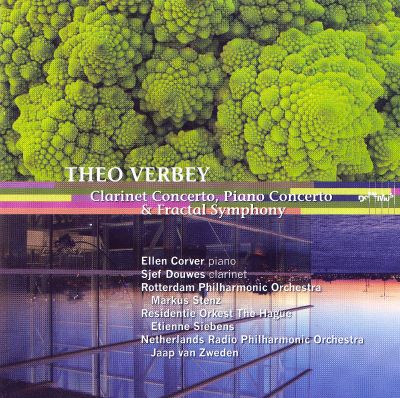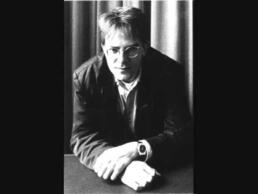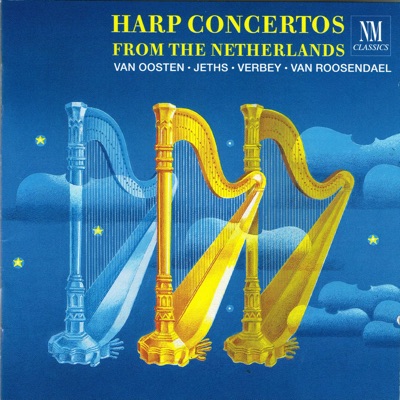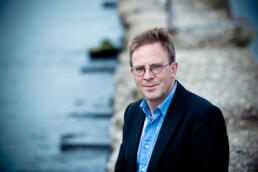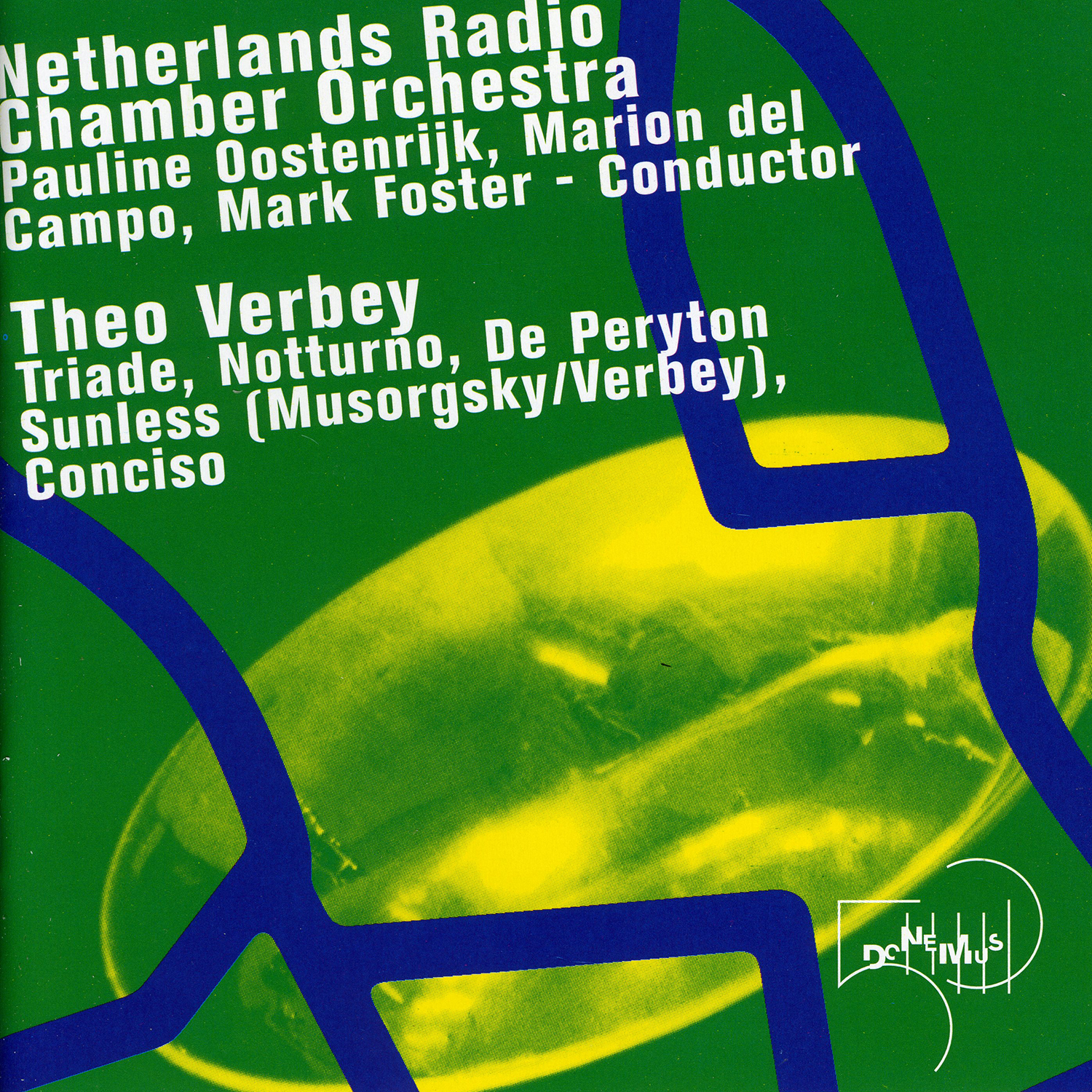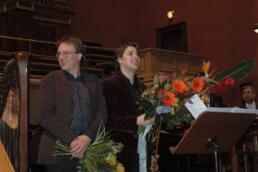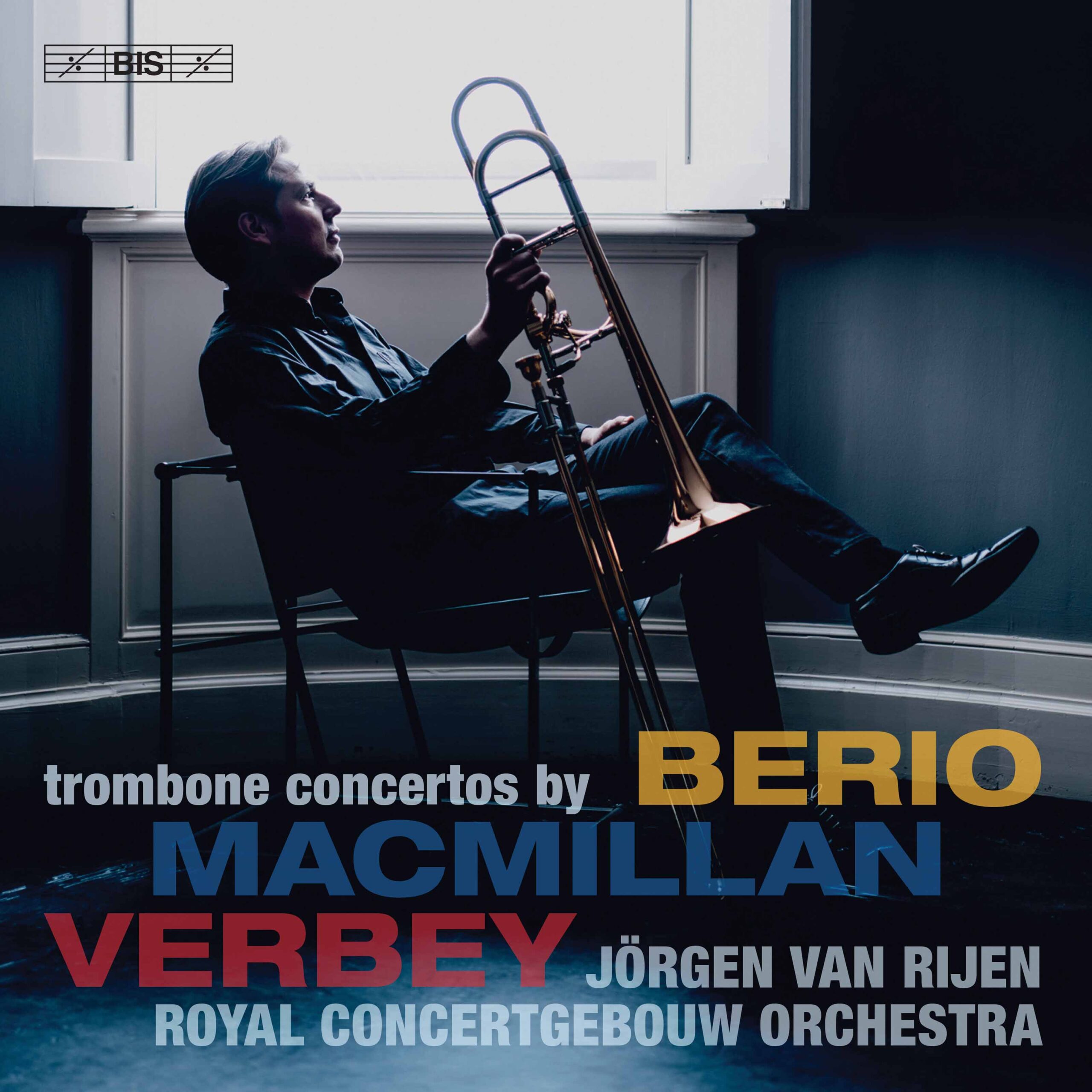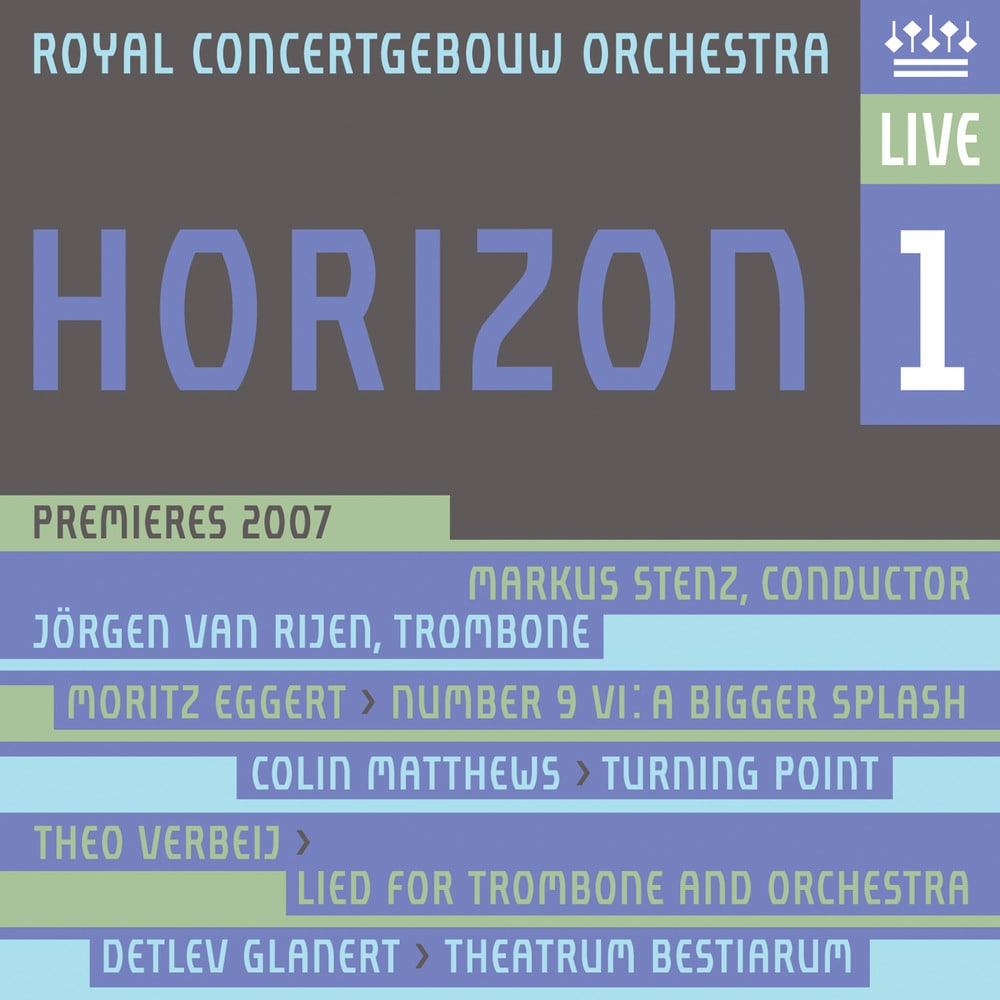Piano Concerto
Details
Duration:
20'
Instrumentation:
5555 8532 2timp 4perc pf-solo
Dedicated to:
Ellen Corver
Premiered by:
The Netherlands Radio Philharmonic Orchestra, conducted by Jaap van Zweden
Find on CD:
About 'Piano Concerto'
“If we assume that it is possible to distinguish in music between beauty of sound and beauty of emotion / affect, then the above sequence is exactly the one I am aiming for. Beauty of structure comes first, because music is in some ways exclusively a sounding structure.”
This statement, made by Theo Verbey, is reminiscent of Stravinsky’s assertion that “art is only about art.” The Dutchman Verbey also seems to regard emotion as a kind of by-product of form, as something inherent to the musical structure and not as an end in itself. Verbey, who teaches instrumentation and composition at the Conservatories of Amsterdam and The Hague, is known for his thorough knowledge of music history and his artisanal approach to musical material. Verbey: “Musical thinking is a non-verbal activity. You start with a few melodic, harmonic ideas and a rough idea of how a piece should sound. The challenge is then in devising a structure, imposing limitations on the material, as it were, and from there looking for solutions, from the large to the small.” With regard to “the small,” or the musical structure, Verbey was influenced by the discoveries of fractal geometry—a mathematical system with which organic shapes can be calculated and reduced to their smallest units. In this way, underlying numerical ratios determine the layout, the proportions and also the rhythmic-harmonic processes of the composition. Verbey has this to say about his “fractal technique”: “I think it is nice to bring such an abstract division of time into alignment with musical ideas, in the field of harmony and development as well. In some ways, this technique is related to the tone rows of the serialist composers. I make a rhythmic plan, even though that plan or “sequence” does not consist of twelve but perhaps four or five elements. I primarily use that plan to time the chord changes.” Such mathematical structures, however, form a hidden layer within the composition that is hardly perceptible to the listener. Beyond that, Verbey writes a very recognizable type of music that is rooted in the experiences of many centuries of music history. His compositions are characterized by allusions to historical models, a unique sense of dramatic tension and musical structure, and the use of tonal-modal chordal connections.
Verbey’s Piano Concerto, commissioned by the ZaterdagMatinee, is an exceptional addition to the genre because of its unusual orchestration. As the composer explains: “The ensemble consists exclusively of wind and percussion. The wind instruments used are the same as those used by Stravinsky in Sacre. These orchestral forces were available because such a large wind group was needed for this concert. What I didn’t want is what you have in a traditional piano concerto, where a symphony orchestra surrounds the soloist. An alternative would have been to use a reduced orchestra, but I chose not to do that this time.” Formally, the work consists of two slow “dialogues” alternating with two fast “toccata” movements. Verbey: “The dialogues are what they are, namely an alternation between fragments in the piano with fragments in the ensemble. As far as the toccata movements are concerned, I focused on the historical form which is characterized by a hammering motion. In some places I deliberately referred to famous toccatas from music history, such as those from Ravel’s Le Tombeau de Couperin, Debussy’s Pour le Piano and Prokofiev’s op. 11—although not literally. It’s more about the idea. (In modernism, those sorts of musical forms are no longer referred to in the same way.) The second toccata refers to Berio’s Points on the Curve to find for piano and 23 instruments—that also has a similar type of motion, a very fast 32nd-note movement, but there, it is no longer called a toccata. The piano is an instrument in which the tones resound relatively fast, and that gives it a completely different characteristic of sound than almost all the other orchestral instruments.”
The Piano Concerto is dedicated to the pianist Ellen Corver, with whom the composer shared ideas extensively during the preparation phase: “Ellen had a whole list of things she wanted in the concerto, such as silences, dialogues, horizontal woodwind chords and a coda. She wanted a kind of mirror effect in the material, so that elements played by the pianist plays also return in the orchestra. Composing means carrying out an intention, and suggestions from the performer can make a contribution to that. They result in melodic ideas that you can then use in developing of the musical form. They are ultimately a tool to help realize a piece of music. ”
Video
Recording
Pavane Oubliée
Details
Duration:
9'40"
Instrumentation:
harp-solo str(6.6.4.4.2.)
Commissioned by:
Performing Arts Fund NL
Dedicated to:
Godelieve Schrama, harp
and Amsterdam Sinfonietta
Find on CD:
In Theo's Own Words
“Pavane Oubliée for harp and strings was composed in 1995. The piece lasts almost 10 minutes and has an anti-virtuoso character. The music is slow and introverted except in the solo passages for the harp. The title refers to the 16th-century Italian dance form on the one hand, and, on the other, the ‘oubliée (= to forget) refers to the idea of improvising on a motif from a song that has almost disappeared from memory. The piece has a fractal form, meaning that the length ratios of the individual movements are the same as the length ratios within one and the same section.”
– Theo Verbey
In Concert
12 Mar 2022
06 Mar 2022
05 Mar 2022
04 Mar 2022
- 1
- 2
Notturno
Details
Duration:
12'
Instrumentation:
oboe-solo 2h 4vln 2vla 2vc cb
Commissioned by:
Performing Arts Fund NL
Premiered by:
Bart Schneeman, oboe, and the Radio Symphony Orchestra conducted by Jac van Steen
Find on CD:
In Theo's Own Words
“Notturno is a piece for oboe solo and 11 instruments which lasts approximately 12 minutes. The piece has a 4-part structure in the sequence slow-fast-slow-fast, and with the proportions 2: 4: 1: 5. Like all my other works, this piece also has a fractal form, in that the proportions keep repeating in the rhythm on an every smaller level.
Notturno – associations after the fact
1st movement: (2 minutes)
A late summer evening in East Amsterdam. A Brazilian tango orchestra rehearses on the third floor of an apartment building on 1st Oosterparkstraat. Moments later, the jazz bassist from the US in the attic begins warming up, and the Indian oboist on the 2nd floor begins practicing his long notes. The counterpoint, separated by floors and ceilings, produces a wonderful sort of multicultural sound. Suddenly, the music freezes in fright when a police car (in the horns) drives past outside. After all, all the residents are undocumented immigrants. When it seems the expected raid is not forthcoming, the playing together resumes and is expanded. Then we hear the police car pass by again (faster this time). The tango orchestra and the jazz bassist decide to call it quits.
2nd movement: (4 minutes)
In the meantime, the mice in the shops on the ground floor begin eagerly searching for food, and the oboists starts practicing runs and fragments of melodies, which he thinks he remembers from Mozart. Soon, the Italian opera singer who lives next door wakes up, yawns noisily and sighs before falling back to sleep. This whole thing is only repeated once the oboist has tried to imitate the singer.
3rd movement: (1 minute)
The house is now completely quiet. The oboist has climbed onto the roof and plays a few phrases just for himself, accompanied by the rustling of the trees and the sound of trams buzzing past in the distance.
4th movement: (5 minutes)
A few streets away, a house party is taking place. The oboist tries to keep pace, at a tempo of 136 beats per minute. We can only hear the results through the closed door, and decide to walk home, looking up at the stars every now and then.
A summer evening in Amsterdam Oost (East Amsterdam).”
– Theo Verbey
In Concert
06 Mar 2025
07 Mar 2025
18 Jun 2021
12 Jun 2015
LIED
Details
Duration:
18'
Instrumentation:
trombone-solo 3333 4221 timp 2perc hp str (0.0.10.8.6)
Commissioned by:
The Performing Arts Fund NL and the Royal Concertgebouworkest
Find on CD:
In Theo's Own Words
“LIED for Trombone solo and orchestra was written in the years 2006/2007, commissioned by the Performing Arts Fund NL and the Royal Concertgebouworkest. One striking feature of the trombone is the way the instrument combines the range of both the high and low male voice. My original intention was therefore to write songs for a kind of “super male voice”, which I would later rewrite for trombone. As a point of departure, I took a number of poems from such poets as Rilke, e.e. cummings, and Borges, and I tried to imagine what they would sound like if they were read aloud and translated into a totally unfamiliar idiom. I imagined the solo trombonist as a singer who does his utmost to make something understandable without ever succeding. The soloist never loses sight of the cantabile tone, even in moments of virtuosity. That also means that the soloist is accompanied sparingly and never drowned out. Another feature of the trombone is its enormous dynamic range. The instrument can play increadibly loud but also very soft. I made little use the most extreme loudness , because even in quieter dynamics, the tone still has great impact. To me, it’s more like a powerhouse rocking a baby. Most of the music is quiet in character. Structurally, the work is in line with some earlier concertante works I wrote in recent years: Clarinet Concerto (2005) and Piano Concerto (2006). There are four movements: slow-fast-slow-fast, which follow each other without a break. The slow movements each strongly resembles a monologue, and both conclude with a solo cadenza above a long low note.”
– Theo Verbey
In Concert
20 Mar 2009
19 Jun 2012
Clarinet Concerto
Details
Duration:
20'
Instrumentation:
3.3.3.3 - 4.2.3.0 - timp, 2perc, hp, str(12.10.8.6.6) - cl-solo
Commissioned by:
Performing Arts Fund NL
Dedicated to:
Sjef Douwes in honor of his 25th anniversary as solo clarinetist in the Rotterdam Philharmonic Orchestra
Find on CD:
About 'Clarinet Concerto'
As with many other composers of his generation, two influences are of remarkable importance to Verbey: Firstly, the influence of American music from the early 1960s, the so-called “minimal music”, and secondly, the influence of postmodernism through the reference to older classical art music and also to other music genres such as jazz, pop and world music. Especially because these genres are so ubiquitous. Issues such as ‘modernity’ or ‘social relevance’ do play a role, but they are less in the foreground than roughly twenty years ago.
The Clarinet Concerto is a three-movement work in which the movements relate in time approximately as 9: 6: 3. In the first movement, the introduction of two constructive ideas forms the starting point: an angular, wooden melody in the horns against a low, free melody in the bassoon and contrabassoon. After this the solo clarinet repeats these two thoughts in its own way, after which a contrasting part follows. The first part concludes with a sort of summary of what happened.
The second part refers to the Japanese Gagaku “Eetraku”. This is ceremonial music for use in temples and at traditional weddings. The solo clarinet takes over the role of the hichiriki: the solo ritual instrument within the Japanese orchestra. The strings take the role of the sho (mouth organ) and equivalents of koto (zither) and biwa (lute) are found in the harp and pizzicato of the cello group. Finally, in the percussion we find the equivalents of the shoko (gong), taiko (big drum) and kakko (small drum). The third movement is a fleeting, short movement that serves to conclude the entire work.
The confrontation between soloist and orchestra (in particular with the horn group, harp and percussion) is of course central to this work. Both worlds occasionally meet when the solo clarinet merges with the clarinets in the orchestra. As in other works, balance and elegance are more important than emotional discharges and bursts of sound. The main musical objective is to hold the attention of the experienced listener.
In Concert
13 Nov 2009
17 Sep 2009
29 Apr 2016
